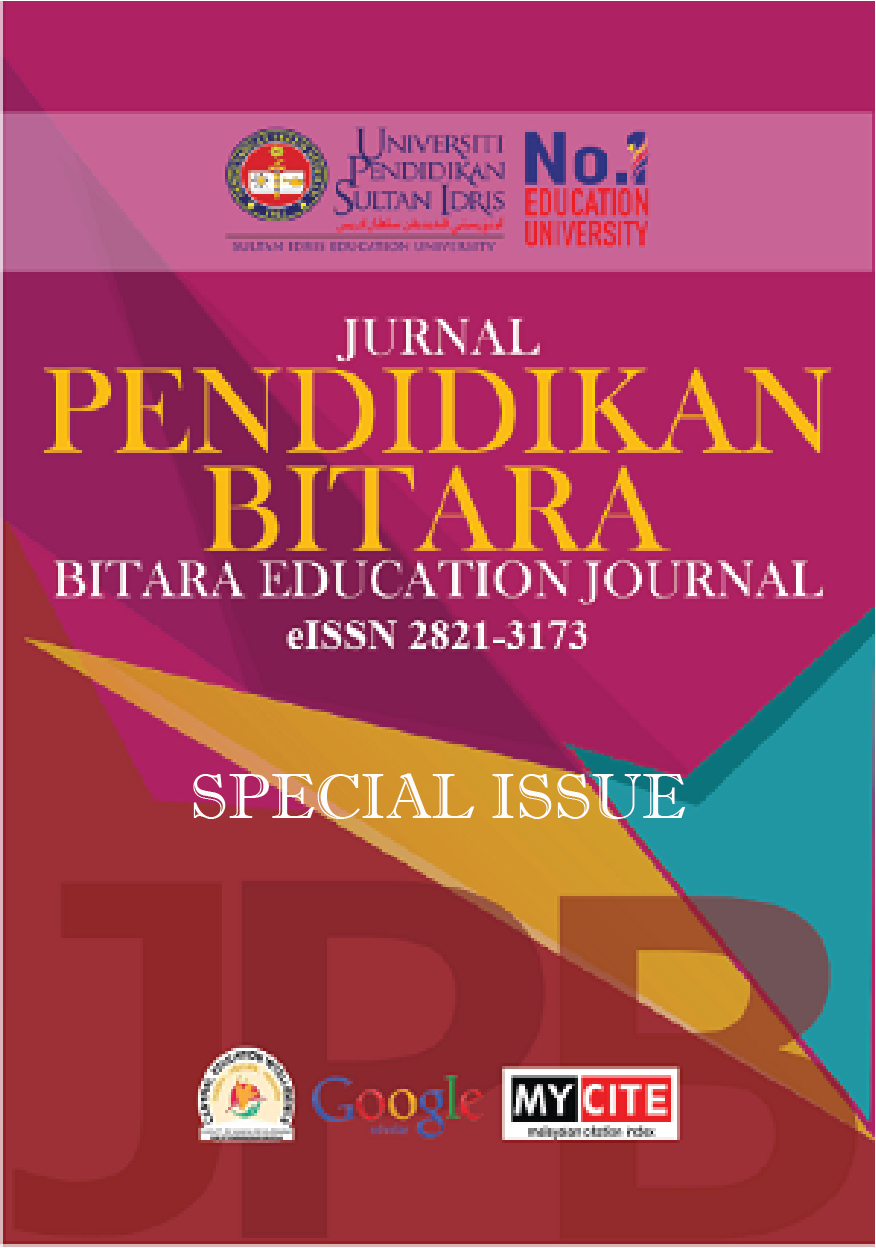Intensive remedial program for pupils at risk of dysgraphia: A single case study
DOI:
https://doi.org/10.37134/bitara.vol12.sp.7.2019Keywords:
dysgraphia, scaffolding, remedial program, fine motor skillsAbstract
This study employed a single case about implementing a remedial program to help pupil at-risk of dysgraphia in order to hold a pencil with the correct gesture. This remedial program was developed to improve pupil at-risk of dysgraphia to hold a pencil correctly and train their fine motor skills which was a pre-requirement to learn writing. This research was based on Vygotsky’s constructivist theory to produce a new remedial program. Data were collected from a preschool teacher and a preschooler in one of the Malaysia public schools through lesson observations. Moreover, document analysis on reflective journals and daily lesson plans were conducted in order to achieve a whole picture of this remedial program. The findings indicated that this remedial program was practical to scaffolding pupil who was at-risk of dysgraphia in particular to hold a pencil correctly. At the end of the study, the pupil was able to hold a pencil with the correct gesture and to start writing.
Downloads
References
Department of Occupational Therapy. Royal Children’s Hospital. Melbourne (2005). Developing a pencil grip [Fact sheet]. Retrieved from http://www.rch.org.au/uploadedFiles/Main/Content/ot/InfoSheet_A.pdf
Deiner, P. L. (2010). Inclusive early childhood education: Development, resources, and practice. Belmont, CA: Cengage Learning/Wadsworth.
Franklin, D., & Cozolino, L. J. (2018). Helping your child with language-based learning disabilities: Strategies to succeed in school & life with dyslexia, dysgraphia, dyscalculia, ADHD & processing disorders. Oakland, CA: New Harbinger Publications.
McBride-Chang, C. (2019). Coping with dyslexia, dysgraphia and ADHD: A global perspective. London: Routledge.
Merriam, S. B., & Tisdell, E. J. (2016). Qualitative research: a guide to design and implementation (4th ed.). San Francisco, CA: Jossey-Bass.
Pound, L. (2017). How children learn. United States: Andrews UK.
Richards, T. L., Berninger, V. W., Stock, P., Altemeier, L., Trivedi, P., & Maravilla, K. (2009). Functional magnetic resonance imaging sequential-finger movement activation differentiating good and poor writers. Journal of Clinical and Experimental Neuropsychology,31(8), 967-983. doi:10.1080/13803390902780201
Rief, S. F., & Stern, J. M. (2010). The dyslexia checklist: A practical reference for parents and teachers. San Francisco, CA: Jossey-Bass.
Sassoon, R. (2003). Handwriting: The way to teach it. London: Paul Chapman.
Sousa, D. A. (2016). How the special needs brain learns (3rd ed.). Thousand Oaks: Sage.
Sutherland, J., & Green, M. (2014). Dysgraphia: Causes, connections and cures. United States: CreateSpace Independent Publishing Platform.
Wing, A. M. (2000). Motor control: Mechanisms of motor equivalence in handwriting. Current Biology,10(6). doi:10.1016/s0960-9822(00)00375-4
Downloads
Published
How to Cite
Issue
Section
License
Copyright (c) 2019 UPSI Press

This work is licensed under a Creative Commons Attribution-NonCommercial-ShareAlike 4.0 International License.





